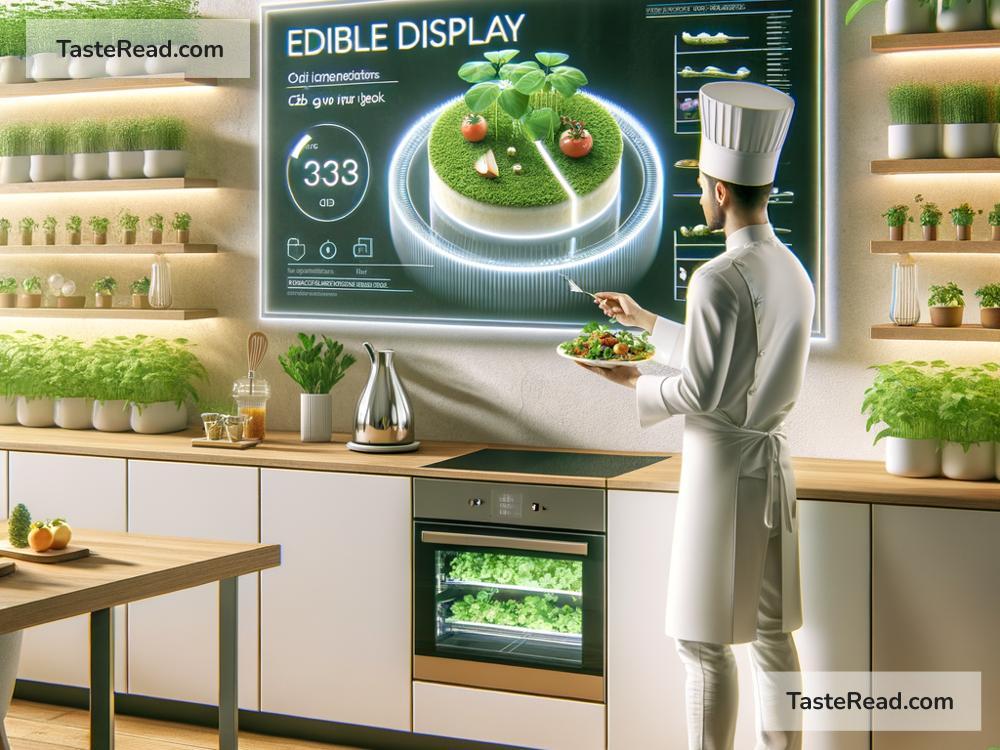The Future of Food: A Path Toward Holistic Systemic Innovation
Food is an essential part of life. It connects us to our cultures, nourishes our bodies, and fuels our daily lives. But have you ever paused to think about where your food comes from and how it impacts the world? As the global population grows and climate challenges intensify, the future of food will look very different from today. To meet these challenges, we need holistic systemic innovation—a coordinated effort to rethink our food systems from the ground up. Let’s explore this idea in simple terms and imagine a better future for food.
What Is Holistic Systemic Innovation?
Holistic systemic innovation means looking at the big picture. Instead of fixing just one problem at a time, it’s about thinking of all the moving parts within a system and finding ways to make improvements that work together. Food systems—how food is grown, distributed, consumed, and disposed of—are deeply interconnected with the environment, economy, health, and culture. By making changes across all these areas, we can create a sustainable and fair food system for everyone.
Challenges Facing Food Systems Today
Our current food systems face several problems:
-
Climate Change: Farming relies on stable weather, but global warming is causing droughts, floods, and unpredictable conditions. This makes growing food harder and less reliable.
-
Resource Use: Agriculture uses a lot of water, land, and energy. Some practices harm the soil and freshwater supplies, making food production unsustainable over time.
-
Food Waste: A staggering amount of food goes to waste—roughly one-third of all food produced globally. That’s not just wasted food; it’s wasted resources, too.
-
Health Issues: Processed and unhealthy foods are common today, leading to increasing rates of obesity, diabetes, and heart disease.
-
Access and Equity: Not everyone in the world has access to affordable, nutritious food. Millions go hungry every day while others have more than enough.
These challenges show why our food systems need a major transformation. Tweaks won’t be enough—we need big, interconnected changes.
Innovations Shaping the Future of Food
Exciting innovations are emerging, bringing hope to global food systems. Let’s break them down:
-
Regenerative Agriculture: Unlike traditional farming, regenerative agriculture focuses on restoring soil health and biodiversity. By planting cover crops, rotating crops, and reducing chemical use, farmers can grow food while improving the land.
-
Alternative Proteins: As meat production contributes to greenhouse gases, scientists and entrepreneurs are creating alternatives. Lab-grown meat, plant-based proteins (like Beyond Meat or tofu), and insect-based proteins are gaining popularity.
-
Vertical Farming: Farming doesn’t always need wide-open fields. Vertical farming uses indoor spaces and stacks crops in layers. It uses less space and water while allowing food to be grown in cities close to consumers.
-
Food Waste Reduction: New apps and technologies help connect surplus food with people who need it, reducing waste. Composting and innovations in packaging also ensure less food is thrown away.
-
AI and Data in Farming: Technology like drones, sensors, and artificial intelligence helps farmers monitor weather, soil, and plant health in real-time. These insights make farming smarter and more efficient.
-
Smart Packaging: Packaging that keeps food fresh longer or gives real-time updates on spoilage is being developed. This can help reduce waste and improve food safety.
These innovations show how science and creativity can contribute to solving our biggest food challenges.
The Role of Consumers
Change doesn’t only come from scientists and farmers; it comes from all of us. As consumers, we have the power to influence food systems with our choices. Here’s how you can contribute:
-
Eat Sustainably: Choose local, seasonal foods to reduce the carbon footprint of transportation. Opt for plant-based meals more often.
-
Reduce Food Waste: Plan meals ahead, store food properly, and use leftovers creatively. Compost scraps when possible.
-
Support Ethical Brands: Buy from companies that promote fair wages, sustainable sourcing, and environmental protection.
-
Educate Yourself: Learn about where your food comes from. The more informed your choices, the bigger impact you can make.
When consumers demand better food practices, businesses follow suit. Small changes can lead to big ripple effects across the system.
A Vision for the Future
Imagine a future where technology and tradition work together to create a balanced food system. Farms might rely on drones and AI while still honoring the wisdom of ancient methods, like crop rotation. Cities could be home to skyscrapers filled with vertical farms, making fresh food available to everyone. Waste would be nearly eliminated, thanks to smart packaging and recycling.
Food in the future wouldn’t just nourish our bodies—it would nourish the planet, the economy, and our communities. Everyone would have access to affordable, healthy meals, and food would be produced in ways that respect the Earth’s resources.
Conclusion
The future of food requires innovation that goes beyond quick fixes. Holistic systemic innovation means designing food systems that work for people and the planet. It’s about combining science, tradition, technology, and collective action. While challenges like climate change and food waste are serious, the seeds of change are already being planted. With creativity, cooperation, and commitment, we can reinvent food systems to be sustainable, fair, and nourishing—for generations to come.
Food isn’t just a product; it’s a shared resource, a culture, and a legacy. By embracing holistic changes today, we can ensure a brighter, healthier future for tomorrow’s meals and the planet that sustains them.


